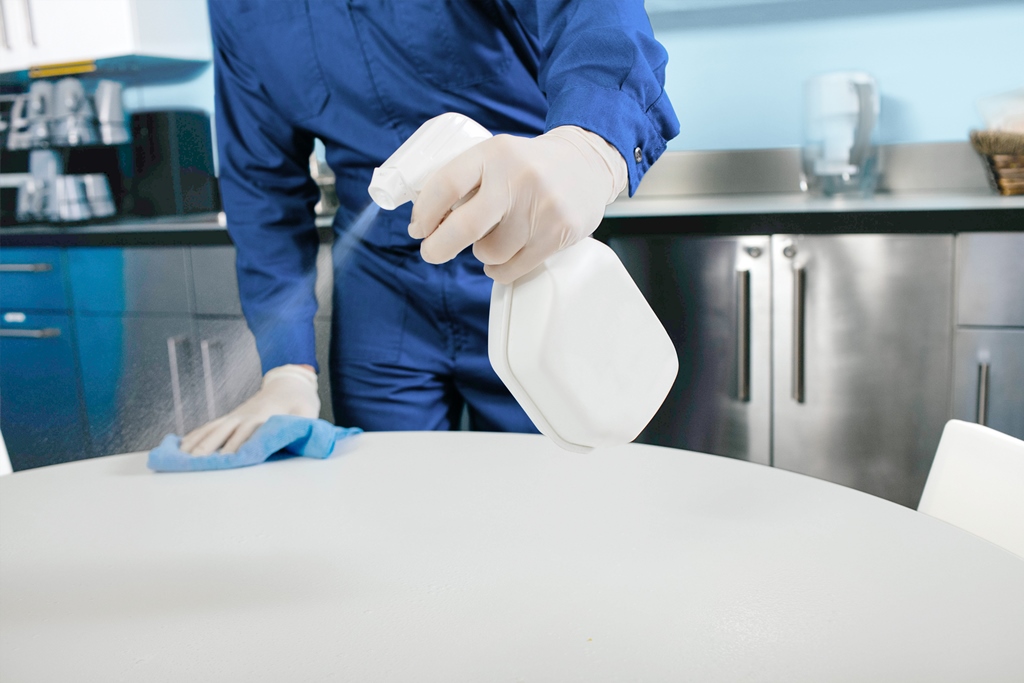Even while cleaning up may not be the most enjoyable task on your to-do list, it may go a long way toward keeping you and your family healthy. Surface filth and grime may be removed from a surface by regularly cleaning it with soap and water or a detergent (ex: floors, walls, carpet, windows). Remove dirt and bacteria from surfaces by sanitizing the area Certain items and surfaces are cleaned and sanitized once they have been freed from dirt and debris (ex: counters, bathrooms, dishes, toys, silverware). After cleaning, certain items and surfaces need further disinfection to remove germs (ex: sinks, changing tables, counters, toys). Choosing the disinfection services is essential there.
Cleaning chemicals, disinfectants and sanitizers may be dangerous
The use of chemical disinfectants and sanitizers is essential in the control of infectious diseases, but they may be hazardous to children when used in concentrated form. It is essential that products be stored in their original containers, especially in situations where children cannot get them.  Children should not have access to spray bottles that contain disinfectants and other cleaning products unless they are properly labeled. Spraying solutions should be avoided while children are around to prevent inhalation and skin and eye exposure. Before utilizing any chemicals, be sure to read the product label and the manufacturer’s Material Safety Data Sheet. In general, bleach (chlorine in the form of sodium hypochlorite) is an excellent disinfectant and sanitizer, depending on the dose.
Children should not have access to spray bottles that contain disinfectants and other cleaning products unless they are properly labeled. Spraying solutions should be avoided while children are around to prevent inhalation and skin and eye exposure. Before utilizing any chemicals, be sure to read the product label and the manufacturer’s Material Safety Data Sheet. In general, bleach (chlorine in the form of sodium hypochlorite) is an excellent disinfectant and sanitizer, depending on the dose.
There are a wide range of bleach concentrations to choose from, including:
- Laundry bleach is a sodium hypochlorite solution with a concentration of 5.25 percent, or 52 500 parts per million, sometimes referred to as “household bleach” (ppm).
- Because the “ultra” version contains just a little more concentrated bleach, it should be diluted and used in the same way as regular household bleach. Note:
- Because they are hazardous to children, stronger industrial bleach solutions should not be used in daycare centers or other places where children are present.
Disinfectants like household bleach, which can be purchased at most grocery stores, are effective, affordable, and simple to use. Some metals, rubber, and plastic materials may be corroded by it. Every day, fresh bleach solutions must be prepared and stock solutions must be replaced every few months since bleach solutions quickly lose their strength. Before wiping away the bleach solution, let it to rest for at least two minutes.
Cleaning products that include disinfectants include:
By separating cleaning and disinfection tasks, you may save money on disinfectant chemicals
A disinfectant or sanitizer will be less effective on filthy surfaces or products. It is necessary to clean the surface with soap or detergent and water before disinfecting or sanitizing it, as stated above, in order to receive the best effects. Bleach (a sanitizer/disinfectant) and ammonia (a cleaner) should never be used together since they produce a toxic gas.
Cleaning solutions developed at home that are safer or more environmentally friendly
Cleansers made from baking soda, liquid soap, and vinegar, for example, may be made with fewer toxic ingredients. You may be able to save money in the long run by using more economical materials. Because of this extra “elbow oil,” you may have to scrub a little harder.
Consult your child’s primary care physician
See your doctor if you have any doubts about the safety of household cleaning products. Parental worries about chemicals in home cleaning products may be addressed by a member of your local Pediatric Environmental Health Specialty Unit.





